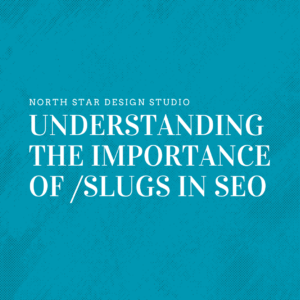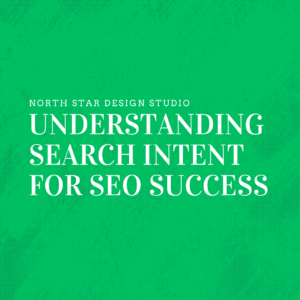Get your page speed, crawling, and all the important parts of SEO right for greater online visibility and higher search rankings.
SEO is a game of inches. To improve your ranking and get more traffic from search engines, you need to make small, but consistent improvements to your website and the way it’s written.
But which tweaks are going to have the biggest impact? And what should you be focusing on if you’re just getting started with SEO?
Several pieces of research indicate that there are more than 200 SEO ranking factors that affect how well your site ranks in search engine results. While improving all these SEO elements can be helpful, some ranking factors are more influential or foundational than others. In this post, we’ll discuss the most important elements of SEO.
These are the elements you should focus on if you’re just getting started, and you want to have the biggest possible impact on your SEO.
Want to quickly check the essential SEO elements on your site? Request a Free SEO Audit via email and we’ll send you an easy-to-read report.
SEO can be divided into two main parts.
- On-page SEO
- Off-page SEO
On-Page SEO
The most important parts of on-page SEO are the following.

1. Crawlability and indexability
Crawlability refers to Google’s ability to find your content. Google constantly crawls the web using bots to discover pages. If Google can’t crawl and index your site, you won’t show up in search results, so you need to get your crawlability and indexability right.
Indexability refers to the ability of a search engine to study and index a page.
There can be several crawlability and indexability issues that stop Google from indexing a site. Some of these are:
- Poor site structure: If some of your web pages aren’t internally linked properly, Google bots may not access them easily.
- Internal link structure: Google bots travel the web pages through internal links. A good internal link structure will allow the bots to reach the pages deep in your site structure.
- Looped Redirect: Broken page redirects can cause issues in indexing a site as the crawler couldn’t reach all the pages.
- Server Errors: Broken server redirects and many other server problems can cause indexing issues.
The following are some of the ways that make it easier for Google bots to crawl and index a site:
- Submit a sitemap to Google
- Strengthen internal links
- Update and add new content
- Reduce the page load time of each of the pages
2. Technical SEO
If you have ever wondered what exactly makes up technical SEO, you are not alone.
When something on the technical side of SEO is out of whack, your entire website can suffer.
Here are a few examples:
- Say that you have created a website that has everything right, but you have left out a small detail in a canonicalization plug-in.
- Or, you have created a large homepage slider that takes 3 seconds to download just for the slider.
- Or, you have created a Schema implementation where one letter was off in the business name on certain Schema markup.
This is where mistakes in an SEO implementation can get dicey, and why things are not always cut-and-dry when it comes to effective SEO projects. As a site gets larger and infinitely more complex, one mistake in one part of the implementation really can affect another part of the SEO project.
An expert web design agency like NSDS can help with these and all other technical aspects of SEO to ensure that your core web vitals are improved for better website performance.
3. Content Quality
Google says that the most important element of SEO is creating high-quality content. The best way to do this is to make sure your pages provide accurate information about topics and that users get what they expect when they click through to your page.
The following tactics may cause Google to interpret your content as low-quality or even spammy:
- Duplicated content: Duplicate content is the content that is found on multiple pages or the same page many times, so make sure you’re not accidentally duplicating any of your content.
- Content with little substance: Make sure your pages have enough text for users to read without being overwhelmed by it all at once; don’t stuff your page with keywords just for rankings either; this shows up as spammy behavior!
- Doorway pages: Doorway pages are created specifically for ranking well in search engines but they do not provide any actual value to users; they are often made up of entirely meaningless content.
At NSDS, we offer high-quality content writing services for our clients that improve their visibility and engage their audience. Our expert writers optimize web copy with all the important keywords so that both the Google bots and human beings love it.
4. Keyword Research
Keywords are the lifeblood of your site. Without them, you’re dead in the water. But with them… well, you can be swimming in cash and laid-back tropical drinks with a little umbrella in them!
Just kidding, but seriously, keywords are important. You want to make sure that you are using the right ones in the right places.
According to several pieces of research, your target keyword should be placed in several important places such as your page title tag, H1 heading, and meta description. Use it several times throughout your content as well and aim to include it once in the first 100 words or so. These aren’t hard-and-fast rules, but they’re good guidelines to follow.
The most important thing is to make sure your keywords sound natural in the copy and enhance the user experience.
Avoid keyword stuffing as it can harm your search engine ranking. According to Google’s guidelines, loading the web page with lots of keywords to manipulate a site’s ranking can result in a poor user experience and harm a site’s ranking.

5. Search Intent
When you’re trying to figure out what people want, the first step is understanding the intent of their search. The search intent of a given keyword is what the user wants to accomplish by searching it. It’s important to understand the search intent of each keyword you target.
Search intent is clearer for some keywords than others; if you search “how to cook fish,” it’s pretty obvious that you’re looking for a recipe. Other times, it can be more difficult to determine what someone wants by simply looking at their query. The best way to figure out search intent is to try it yourself-search for something and see which search engine results pop in!
There are various types of search intent:
- Informational: The user is looking to learn something. “When is the next full moon?” is an example of an informational search.
- Navigational: The user wants to find a particular page. If someone searches “YouTube,” for instance, they probably want to go to YouTube’s website.
- Transactional: The user wants to make a purchase. “Buy running shoes online” is a transactional search.
Read our in-depth guide on different types of keywords and the search intent behind them.
Off-Page SEO
Your off-page SEO strategy revolves around the following:
6. Backlinks
Backlinks are links from other sites to yours, and they’re one of the most important SEO elements. Google considers both the quantity and quality of your backlinks, so, ideally, you want a large number of links from high-authority sites. While you can’t directly control who links to your site, you can use various methods for improving your backlink profile:
- Create great content that people want to share.
- Target relevant keywords in your content and link to related resources (e.g., if you write about dog training, link to a page about dog training supplies
- Use natural anchor text (e.g., don’t use “click here”) when linking out from your site
- Conduct outreach. Look for pages related to your topic. Then, email the author and suggest that they link to your page. They might want to, for example, replace a broken link with a link to your page or add your page to a list of resources.
- Write guest posts. Write a guest post for another website and link to your site in your post. Make sure the site is authoritative and relevant to your content.
- Avoid link-building techniques that Google views as spammy, such as buying links and linking to your site in comments on other websites. You can check your backlinks with tools like Google Search Console, Ahrefs, and SEMrush.
7. Social Signals
While social media shares aren’t a direct ranking factor, getting more shares can indirectly boost your SEO. The more people share your posts, the more likely you are to get backlinks. And, social shares lead to increased traffic, which Google views as a positive signal. The following tips can help:
- Build a social media following by posting regularly.
If you want people to share your content on social media, they need to know who you are and what kinds of things you post! Posting regularly will help build your audience and make it easier for them to find out about the great things you do-and then share them with their friends and followers.
- Add social sharing buttons to your website to make it easy for people to share your content.
Social sharing buttons make it easy for readers to share your content; they will often just click the button without even thinking about it and then spread the word about what they just read! Make sure that you have these buttons placed prominently on each page where people might be interested in sharing your content (like at the bottom or top of articles).
Key Takeaway
Search engine optimization is no longer just about getting your website to show up on search engines. Today it’s about getting your customers to show up at your website.
SEO is all about helping people find what they need when they need it—and that’s a good thing!
If you’re not implementing robust, quality SEO on your brand’s website and digital properties, you’re missing out on opportunities for future-proof success. For a quick sneak peek under the SEO hood of your current site, you can request a Free SEO Audit via email and we’ll send you an easy-to-read report.





